Srijani Shilpagram, the art village of Santiniketan – GetBengal story
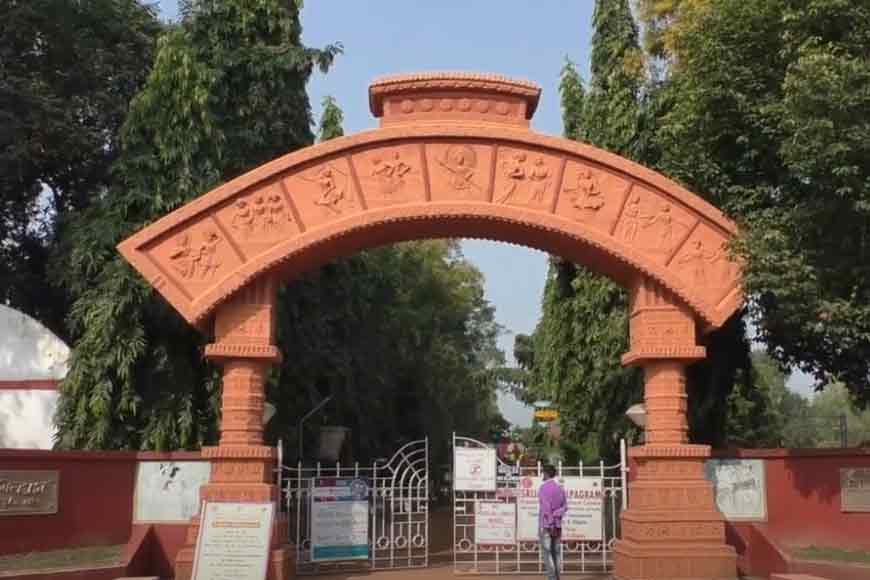
Srijani Shilpagram, Santiniketan, Bolpur
Tucked cosily in Bolpur, opposite Prakriti Bhavan, lies Srijani Shilpagram, the hub of Bengal’s art and culture. Despite not being a village in and of itself, it may be referred to as the gramme or griho of Bengal's art and culture. The location is freeing because of its open-air design, which removes you from the worries of the outside world. It honours Bengali ancestry while serving as a haven.
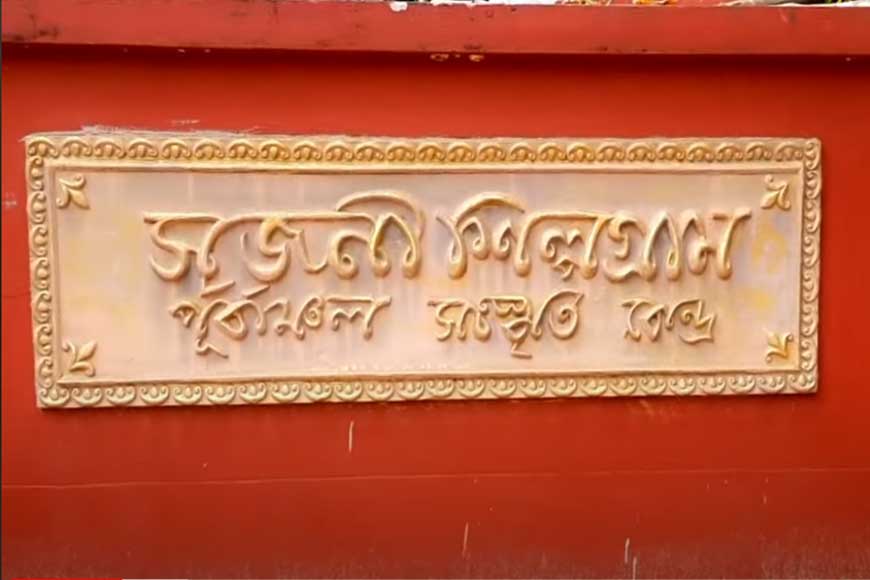
Built on 26 bighas of land, it is known as the cultural centre of Santiniketan. It unites rural art forms in Bengal and is an attempt to preserve these age-old and forgotten forms of art. Although it has recently become popular, the art displayed here isn't new. It is ancient, evolving with time, and mixing with various other arts and cultures. The Tagore family has been instrumental in bringing these ancient Bengali art forms back to life, which is why Shantiniketan was established as the state's cultural hub.
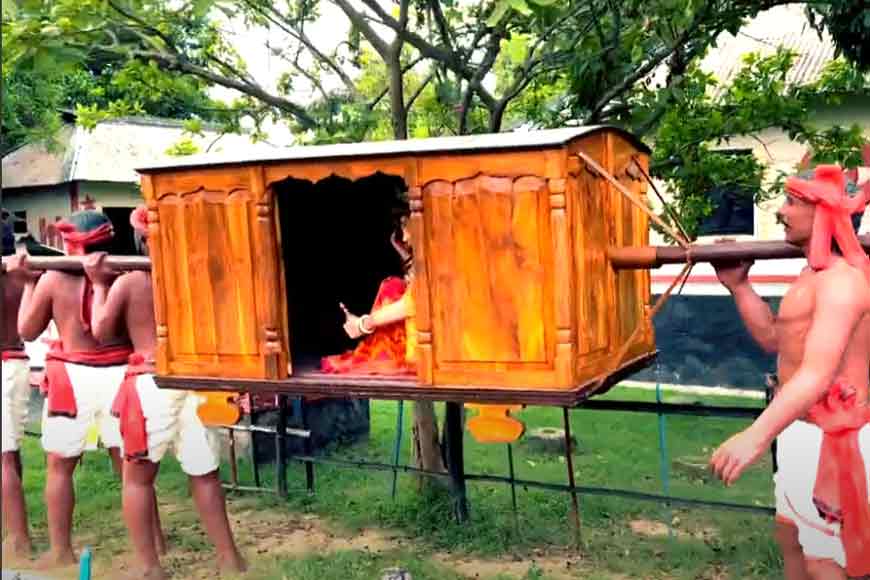
The museum, open from 9.30 a.m. to 5 p.m., can be easily accessed on toto, the most popular form of transport in Santiniketan. The entry fee for adults is 30/-, and students carrying admit cards or any other proof of being students at a school or university have a subsidised entry fee of 10/-. There are no guides in this place, as clear directions and art displays eradicate the need for explanations.
The entry gates are wooden with carved figures on them, mimicking the style of ancient temples. The entryway is lined with wooden structures on either side, which lead to the open and vast gardens. The wooden structures have square-like shapes where random things hang, like a toy parrot, pieces of cloth, wooden windchimes, etc., occasionally propped on wooden sticks. This abstract art, though random, seems to have an order of its own.
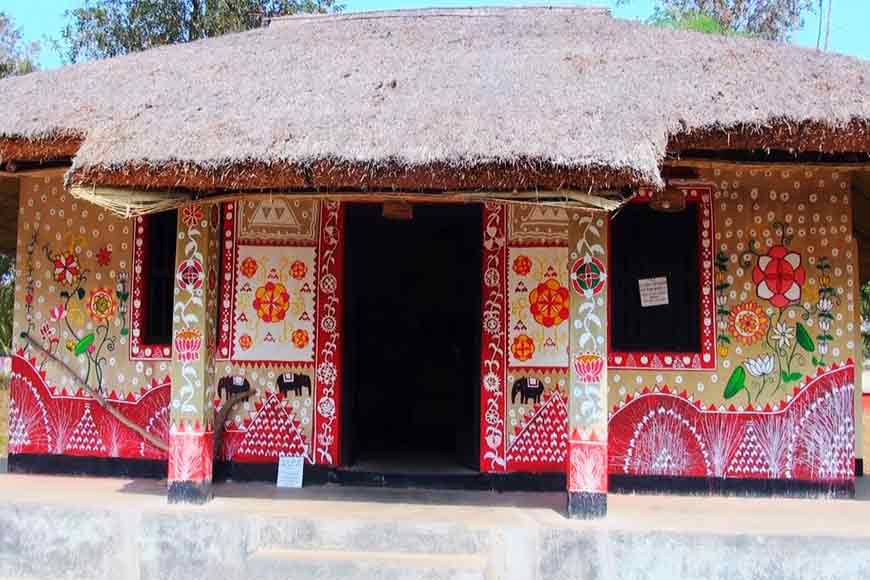
The museum's rustic design transports guests to a bygone era in Bengal, when people coexisted in huts and sang songs as a community. It seems as though one has entered a different world by paying a small amount of money to enter the gates of Srijani Shilpagram, thanks to the expansive green fields, a small fresh pond, baul singers singing their hearts out, dancers and musicians from the Santhal community gracing the place with their dance and distinct music, and the sculptures and art pieces kept without shade.
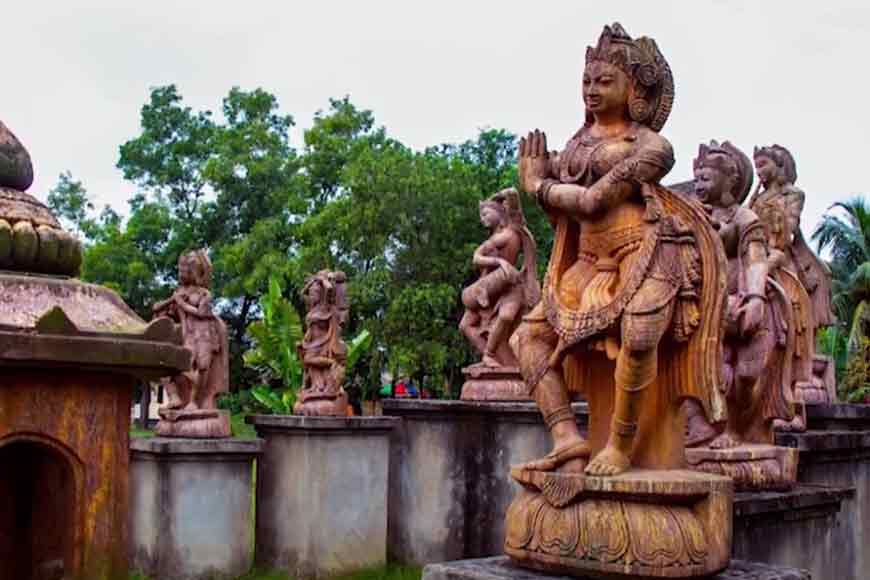
This Shilpagram is one of the eleven such Shilpagrams constructed to display art and culture, and this Shilpagram not only contains art from Bengal but also from states like Odisha, Bihar, and Northeastern states. This art village includes nine museums, which includes the nine states of the Eastern Zonal Cultural Centre, namely: Assam, Bihar, Jharkhand, Manipur, Odisha, Sikkim, Tripura, West Bengal, and the Andaman and Nicobar Islands. Rabindranath Tagore’s vision and concept of amalgamating the entire world into a centre of excellence are very much visible here. The art forms of these states are displayed in their respective huts, which are decorated according to the theme of what is displayed inside. The entry into these huts momentarily transports one to that state and its cultural centres.
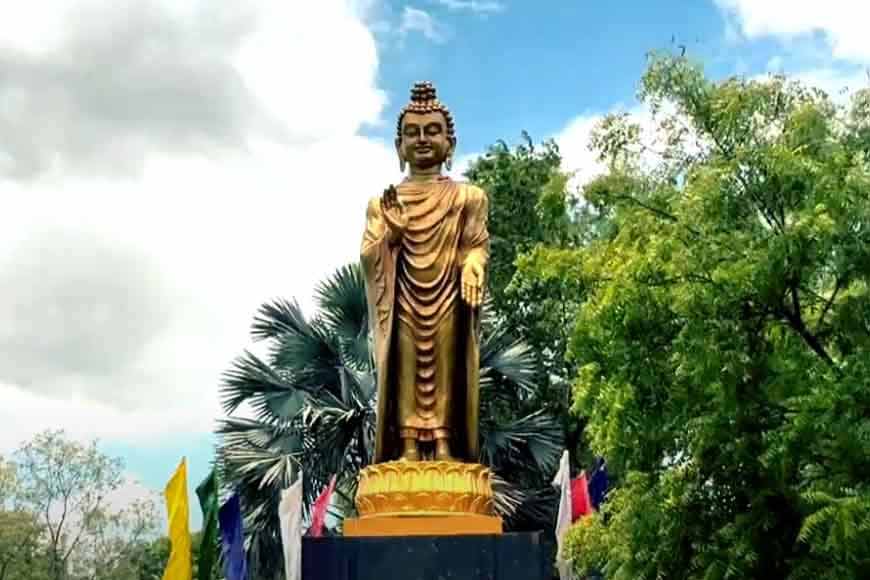
The vast gardens have sculptures displayed without any covers. It is one of the most fascinating things to see in Srijani Shilpagram. Sculptures mimicking the dancing styles of apsaras carved on ancient Indian temples are kept in the open air and scattered around in no particular order. The structure of Buddha emits peace and serenity, while the sculptures in dance poses give a lively feel to the entire place. These sculptures, made from clay and various other materials, are impeccably maintained. The entire shilpagram is very well-maintained, with no garbage lying around; the pond has no floating trash; the grass is well-trimmed; and small streams run here and there with small archways built over them. These small streams often have small flowers blooming on them.
In addition to these sculptures, there were also statues of the freedom fighters from the tribal communities. These statues stand tall on large daises in the middle of the gardens, and their names are written on the daises in three different languages, namely, English, Hindi, and Bengali. Fighters like Birsha Munda, Rani Gaidinliu, etc., still remind us of British cruelty and shed light on the roles played by tribals in the fight for independence.
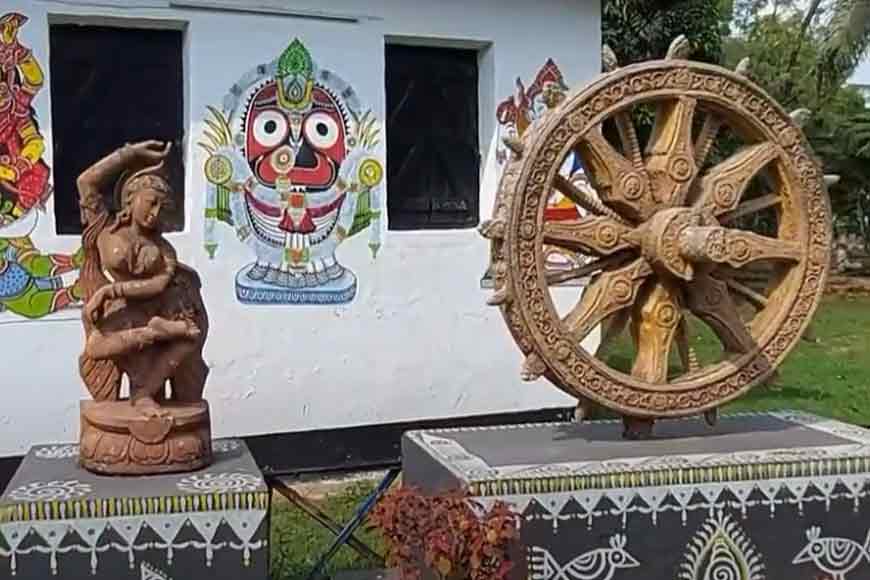
Right next to the sculptures were the huts dedicated to various states. The entire hut was painted in the theme of the art forms displayed inside, and one has to open shoes before entering. The inside display contains art pieces hung from walls. The huts are made from mud, wood, and straw, giving them a rural feel.
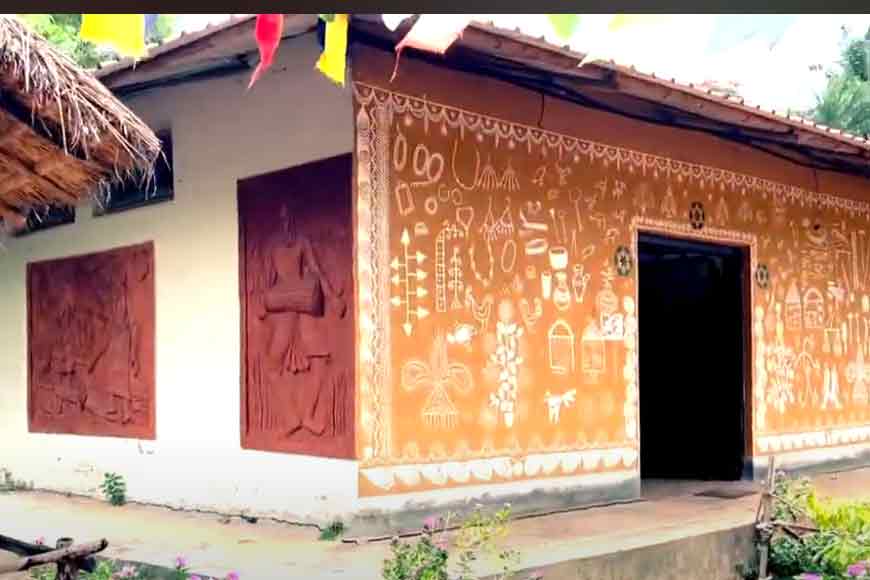
A walk through the gardens leads us to the wonderful Baul singers, sitting and singing their hearts out. They also played the ektara, a traditional folk instrument made with only one string. The wonderful Santhali dancers and drummers were right beside them, playing and dancing to their own distinct tunes. Behind them lay a spread of stalls selling traditional items from each of these nine states, and the prices are negotiable.
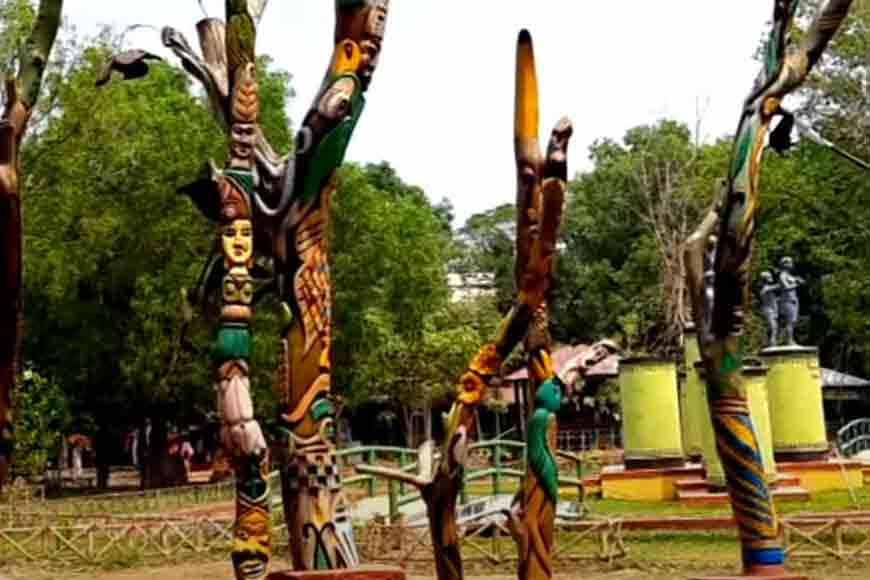
It is a breathtaking experience, and one should not miss the calming, serene, and green vibe of Srijani Shilpagram. It is an absolute must-visit for anyone who wishes to visit Santiniketan.










